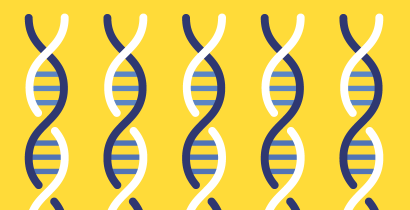From Farm to Fork: Farming, The Beginning of The Food Chain
Last Updated : 06 June 2006Modern farming does its utmost to guarantee quality and safety in food production - thus addressing concerns that are uppermost in consumers' minds today.
Food Origins
The origins of most food products such as bread, milk, meat, fruit, vegetables, sugar, etc. are in agriculture. They are either produced directly on farms or based on food coming from farms. Farmers grow food, which they harvest, store and transport to markets or to processing plants for preservation and transformation into a variety of food products.
In ancient times, man's food came from the wild. About ten thousand years ago, he began to select and promote specific plants and animals for domestic cultivation and husbanding. This was the beginning of farming. Since then, farming has undergone dramatic changes. In this century alone, new technologies and methods have been developed which have greatly increased the variety of agricultural inputs available to farmers and also enhanced the productivity of farming. As a result, today's rapidly growing world population is being fed by a constantly declining population of farmers.
What is Farming?
Modern farming relies on the use of machinery to improve operating efficiency, and on natural and synthetic chemicals both to fight pests and diseases and to enhance crop growth. These technologies not only affect the food farmers grow, but they also impact the environment. Consequently, farmers have a dual responsibility: to supply primary agricultural products with acceptable levels of man-made chemicals, in large enough quantities at affordable prices, and minimise any damage caused to the environment.
Farming entails the use of natural resources, land and water to produce food for human and animal consumption. This basic concept of farming has remained a constant ever since man started to select and grow plants and to raise animals for his personal use, to exchange his farm products for other goods and to sell them for money.
Farmers, in selecting and growing plants and raising animals, protect them against a range of threats from other plants and predators as well as organisms such as fungi, bacteria and parasites. All of these potential hazards can deprive plants and animals of essential nutrients and affect the wholesomeness of food before it ever reaches the consumer.
Farming, therefore, is a highly complex enterprise that requires various elements, including adequate soil and water, efficient machinery to plough and plant the crops, as well as to harvest and transport them. It needs fertilisers to supplement natural soil nutrients, antibiotics to prevent animal diseases and pesticides to protect crops against animals, insects, weeds and various micro-organisms.
And lastly it requires capital to finance all of these operations, and favourable weather conditions.
Farming Practices
Farming practices vary widely according to soil and climatic conditions, the potential marketability of specific farm products and the economic objectives of the farmer.
For these reasons, farming practices vary between regions and even between individual farms within the same region:
- Some farms produce field crops - cereals, fruit and vegetables
- Some produce milk
- Others raise animals for meat, milk or egg production
- Many farms produce combinations of crops and livestock
- Increasing numbers "farm" fish, shellfish and crustaceans as demand for seafood outstrips supply in the wild
Regardless which combination of these basic objectives a farmer pursues, his key activities year in and year out will include:
- Preparing and maintaining the land (or water) for growing the desired crops, ploughing, seeding, fertilising and applying selected chemicals to prevent disease and weeds
- Providing animals with adequate feed via home production or purchase
- Protecting animals' safety and health to ensure they will gain weight, give birth, produce milk or lay eggs
- Harvesting crops for animal or human consumption
- Milking animals and collecting eggs
- Storing crops, housing animals and transporting both to protect them against pests and disease
- Selling crops and animals directly for human consumption or to be used as raw materials or ingredients in the food processing industry.
Farming and Food Quality
Some farmers have elected to practice "organic" or "biological" farming, which they say produces more "natural" food. Since certain toxins, chemicals and micro-organisms occur naturally in many farm products, organic farming does not necessarily mean food is healthier.
Until quite recently, the primary objective of food production in Europe was to produce sufficient quantities of food at affordable prices. As the productivity of farming improved exponentially, the consumer increasingly took quantity and affordability for granted and began to focus more attention on the quality and safety of food and the way in which it was produced.
The quality of farm products begins with the genetic potential of the plants grown or the animals raised. This, however, is just the beginning, since farmers must provide an environment in which plants and animals can develop their full genetic potential. This involves matching animals and plants to the natural environment, providing plants with nutrients, and animals with the food necessary to ensure optimal growth.
The genetic potential of an apple, for instance, is responsible for its size, its colour, taste and smell and the nutritional value the consumer has come to expect. To achieve this potential, the farmer cares for the apple tree constantly. He supplements natural soil nutrients when needed and protects the tree and the fruit against insects and disease. As a result of this care and attention on the part of the farmer, the consumer is supplied with fruits that are insect- or fungi-free, and whose appearance and taste meet the consumer's expectation.
Farming and Food Safety
It is easy for the consumer to determine the taste, smell, appearance and consistency of food, but wholesomeness and safety are often difficult or impossible to judge. Spoilage, which can be a sign of unsafe food, may be noted, but even here appearances can be deceiving, for what is a spoiled food for some may be a delicacy for others.
In general, two types of food safety can be distinguished: the absence of chemicals at levels which may be harmful to health (either acute or long-term), and the absence of micro-organisms and their toxins in amounts which may cause illness. Chemicals may be naturally occurring toxins in the farm product itself or come from external sources as a result of farming practices or chemicals in the soil.
Micro-organisms include bacteria (Salmonella, Campylobacter and Listeria), parasites (bandworms and Cryptosporidia) and viruses (Hepatitis A).
An important priority for farmers is to ensure that their products - whether vegetable or animal in origin - are produced in a safe manner. To comply with this, they are assisted by a wide variety of scientists and farm advisory services. They receive advice on the correct use of fertilisers, pesticides, antibiotics and other products in crop and animal husbandry.
Sensitive products such as pesticides or products used in animal health are subject to strict regulations. They undergo rigid testing procedures before they are accepted for registration by European or national authorities for a specific use. This testing must prove that the product:
- Has real value and will work as intended
- Will have no negative side effects in humans, either during use on the farm or from residues that may remain in food
- Will have no negative environmental effects
The procedure for establishing if a new product merits registration is complex and expensive. It requires many toxicity and efficacy studies before initial field tests can be carried out. It also includes tests on the behaviour of the product and its decomposition products in the plant and in the environment. A product should benefit the plant or animal it is intended to help with no negative effect on other species, and should not leave any harmful residues in the soil or water.
Evaluation of a product does not stop with registration. As science progresses, new knowledge is being constantly acquired which can change the way certain products are viewed. A good case in point is DDT. After many years of use, it was determined that DDT had negative side effects and for this reason its use was banned.
Animal Diseases and the Consumer
Certain micro-organisms can contaminate crops, cause harm to animals and may even be detrimental to man himself. Before tuberculosis was eradicated in animals, milk was boiled or pasteurised to protect humans against the possibility of contracting the disease. During slaughter, animals were inspected in an effort to prevent the TB bacterium from reaching the consumer.
Unfortunately, animals may carry micro-organisms which can cause disease in humans without any evidence of their existence showing during the animal's life cycle or even after its slaughter. Salmonella, Listeria, some strains of E.coli and Campylobacter are examples. Animals may acquire these micro-organisms from their feed or water, from the environment (through insects, birds or rodents), from each other and even from humans. Similarly, disease-causing micro-organisms from humans can infect insects, birds and other animals who, in turn, can transmit them to farm animals.
A new threat to human health emerged in the eighties when cattle started showing symptoms of BSE (Bovine Spongiform Encephalopathy), the so-called "mad cow disease". The nature of the causative agent was unknown at that time. Neither could it be determined whether the disease was transmittable to man or not. Regardless of this, all kinds of preventive measures were taken to avoid the spread of the disease, and to exclude certain animal tissues from human consumption.
These measures were further enforced when a possible link was established between BSE and a new variant of a rare disease, CJD (Creutzfeld-Jakob Disease), in humans. Presently, scientific evidence seems to indicate that the preventive measures taken are becoming effective in controlling the animal disease and in preventing further cases of contagion in humans.
To limit as far as possible the spread of micro-organisms to their animals, farmers observe strict hygienic practices on the farm, during transport and at slaughter. Similarly, care by the consumer or professional food-handler is essential in the form of adequate cooking, pasteurising, sterilising, appropriate storage, etc., particularly if there is any doubt about a product's safety. Fresh vegetables should be thoroughly washed to reduce any possibility of contamination (particularly if vegetables have been irrigated with contaminated water). Salmonella, which may exist in chickens and eggs, can be eliminated through adequate cooking.
Farming and the Environment
Inevitably, farming has an impact on the environment. Through farming, land is physically and chemically transformed. Since farmers use the land for generations, it is in their best interests to ensure their land remains healthy and productive. One of their priorities should be the protection of their land and, by extension, the environment in general.
However, as some cultivation methods and certain products may have adverse effects on the environment which pass unnoticed by the individual farmer, scientific and official regulatory bodies exist to alert him to possible damage. As discussed earlier, one measure is the regulation of pesticides to ensure that they are not harmful to the environment or to humans.
Farming and Research
Because the consumer expects food to be readily available and reasonably priced as well as wholesome and safe, agricultural research is an ongoing process that focuses on fulfilling consumer expectations. Research activities include:
- Developing new plant varieties to provide greater nutritional value, higher production efficiency or resistance to pests and disease (allowing the reduction of pesticide use)
- Improving plant protection methods, including the increased use of biological controls
- Improving fertilisation to further enhance plant nutrition and minimise negative effects on the environment
- Enhancing the quality of meat or milk
- Improving feedstuffs for animals to enhance animal health and optimise the conversion of feed into milk or meat
- Improving irrigation methods to ensure safety and optimise the use of water
These and other objectives of agricultural research aim at further improving the quality and safety of food as it leaves the farm, to minimise any negative impacts on the ecology and to contribute to the goal of sustainable agriculture.
Future Challenges
Farmers, and the network of scientists, governments and manufacturers which supports them, continually direct their energy and efforts toward developing the best growing and living conditions for crops and animals. Enhancing soil nutrition and defending crops and animals against pests and diseases is a constant process made ever more important by the world's growing population and the consumer's demand for a safe and wholesome food supply.
In recent years, economic and technological achievements have led to a sharp fall in the number of farmers in Europe. Today, three per cent of the population produces most of the food required. In the future, research and development will continue to assist farmers to become even more productive, to seek improvements in the safety and wholesomeness of food, and to achieve all of this with minimum impact on the environment. These are the challenges facing the world of agriculture as the 21st century approaches.



